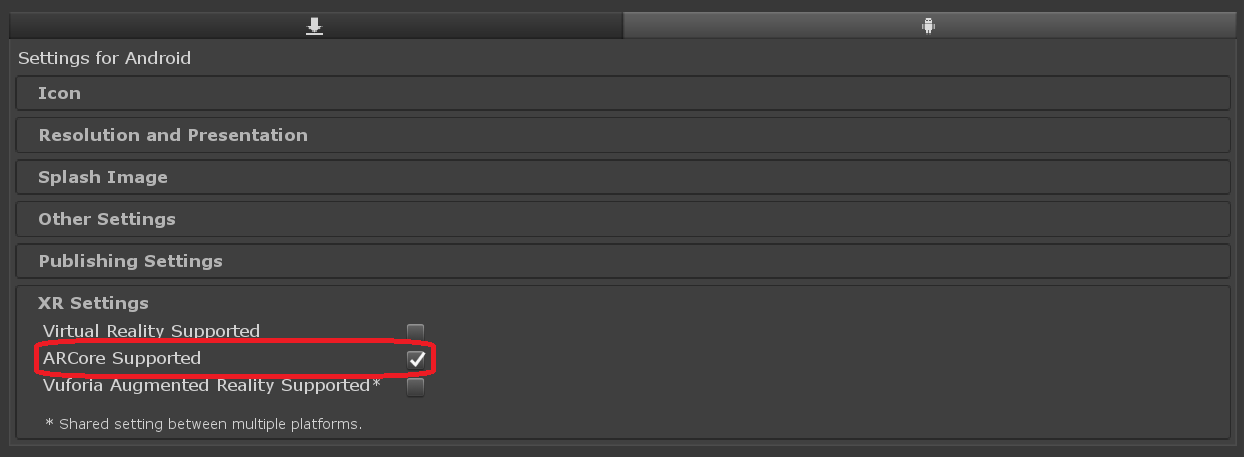

- Unity select android sdk root folder how to#
- Unity select android sdk root folder apk#
- Unity select android sdk root folder install#
- Unity select android sdk root folder drivers#
- Unity select android sdk root folder update#
Select the root folder of the SDK installation. The problem occurred when it prompted me to select an. After I selected the folder it saves, which is fine.
Unity select android sdk root folder apk#
Once I selected Build & Run, I was prompted to select a folder to save the apk file in. The first time you build a project for Android (or if Unity later fails to locate the SDK), you will be asked to locate the folder where you installed the Android SDK. I am new to Unity and decided to try and build an android VR application as my first project After creating the scene, I tried to build using the Android-Support-for-Editor-2017.3.1f1. If you are unsure whether your device is properly installed on your system, please read the Android development troubleshooting page for details.

Unity select android sdk root folder drivers#
Find further information regarding USB Drivers for Windows on the Android Developer page. If the device is not recognized automatically, use the drivers from the Android SDK, or any specific drivers provided by the manufacturer. You can do this through the Windows Device Manager.
Unity select android sdk root folder update#
Windows: If the Android device is automatically recognized by the system you still might need to update the drivers with the ones that came with the Android SDK.

Your device may come with additional information or specific drivers from the manufacturer. This can be tricky, especially under Windows-based systems where drivers tend to be a problem. Go to Settings > Developer options, and check the USB debugging checkbox to enable debug mode when the device is connected to a computer via USB. On the 7th tap, Developer options are unlocked. A small pop-up notification appears saying “you are now X steps away from being a developer” with a number that counts down with every additional tap. Navigate to Build number using the instructions above. Go to Settings > Developer options, then enable USB debugging. Note: On operating systems older than version 4.2 (Jelly Bean), the Developer options aren’t hidden.
Unity select android sdk root folder install#
Install the Android SDKįollow the instructions in Installing the SDK. Download and unpack the latest Android SDK. On your PC, go to the Android Developer SDK website. Unity was confused JDK 9 as well, I solved that in (the main Unity menu, next to "File") Unity->Preferences->External Tools->JDK->Browse and used /Library/Java/JavaVirtualMachines/jdk1.8.0_73.jdk/Contents/Home which was already installed and that (finally!) worked.Whether you’re building an Android application in Unity or programming it from scratch, you need to set up the Android SDK (software development kit) before you can build and run any code on your Android device. I went to Build->Edit Libraries & Dependencies->SDK Location-> then I checked the box. Then I upgraded Java to 9, but that confused Android Studio. I kept getting "major version 52 is newer than 51, the highest major version supported by this compiler." Then Appearance & Behavior->System Settings->Android SDK-> (tab) From there, check the boxes for 7.0 and/or 7.1, click "Apply" or OK and wait for them to install. You open the SDK manager, but this is a tiny little button on the toolbar (not menu bar) that has a blue arrow pointing down on top of a tiny Android character. But it's not obvious that you do this by installing Android version 7.0 or 7.1 within Android Studio. I had to install the level 24 SDK packages within Android Studio before building them in Unity. Other issues I've had with Unity/Android (trying to get ARCore working):
Unity select android sdk root folder how to#
I read somewhere else how to make the hidden Library folder visible:


 0 kommentar(er)
0 kommentar(er)
